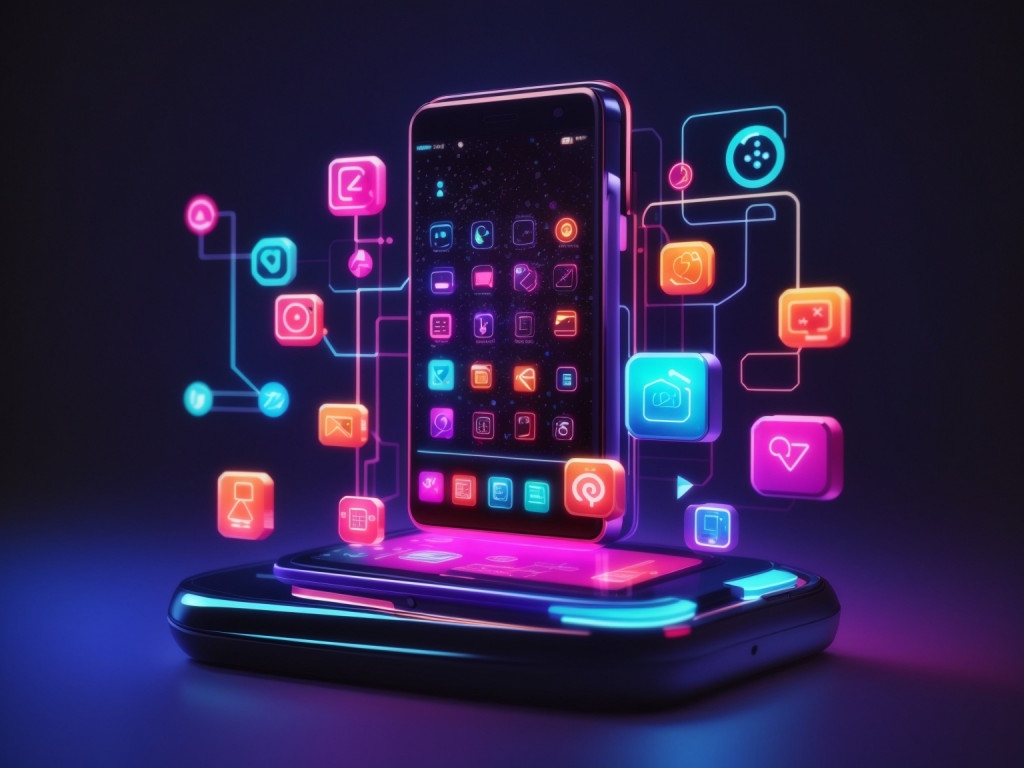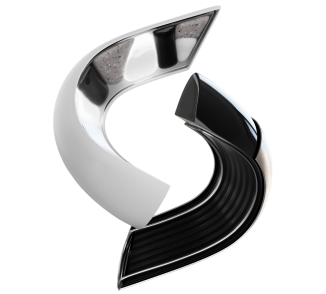This step-by-step guide uncovers the 2025 IoT development trends, hidden cost factors, and proven strategies to launch a scalable, secure IoT platform—faster. Whether you need custom IoT software development or want to partner with a top-tier IoT development company, we break down the exact process: from concept validation to full-scale deployment.
Contents:
Running a small business or venturing a startup in today’s fiercely competitive landscape of the Internet of Things (IoT)? Then, no doubt you face numerous challenges in your quest for success. Increasing customer demands, intense market rivalry, and the constant need to deliver innovative solutions that captivate the audience…
We understand these pains. Perhaps you’re struggling to identify the right target audience or define a compelling use case for your IoT app. Maybe you’re grappling with the complexity of choosing the right development platform. It could be that you’re unsure how to effectively market and monetize your application to maximize its potential.
That’s precisely why we have created this comprehensive guide: to equip startups and product owners like you with the knowledge, insights, and practical steps needed to create successful Internet of Things applications. Whether you’re a budding team aiming to disrupt the market or a lone warrior seeking to enhance your existing offerings, this article will serve as your trusted companion on your app development journey.
What is IoT
As we mentioned above, IoT means the Internet of Things. It is a network of physical objects or “things” that are connected to the Internet and can communicate with each other. These objects can be anything from everyday devices like smartphones, smartwatches, and home appliances to industrial machinery, vehicles, and even buildings.
The basic idea behind IoT is to enable these objects to collect and exchange data with each other over the Internet, without requiring direct human interaction. For example, a smart thermostat in your home can connect to the Internet and communicate with your smartphone or other devices. It can collect data about the temperature and occupancy of different rooms, analyze this information, and adjust the temperature accordingly. Similarly, a wearable fitness tracker can monitor your physical activities, heart rate, and sleep patterns, and provide you with personalized health insights.
The advantages of developing Internet of Things applications are numerous. It empowers startups to optimize their operations, improve efficiency, and enhance customer experience. For product owners, an IoT app opens doors to new revenue streams, better product insights, and increased customer engagement.
IoT market and trends
In 2023, the Internet of Things continues to evolve by leaps and bounds and shape various industries. According to the statistics, there are more than 13 billion connected IoT devices worldwide. By 2030, 75% of all devices are expected to be IoT.
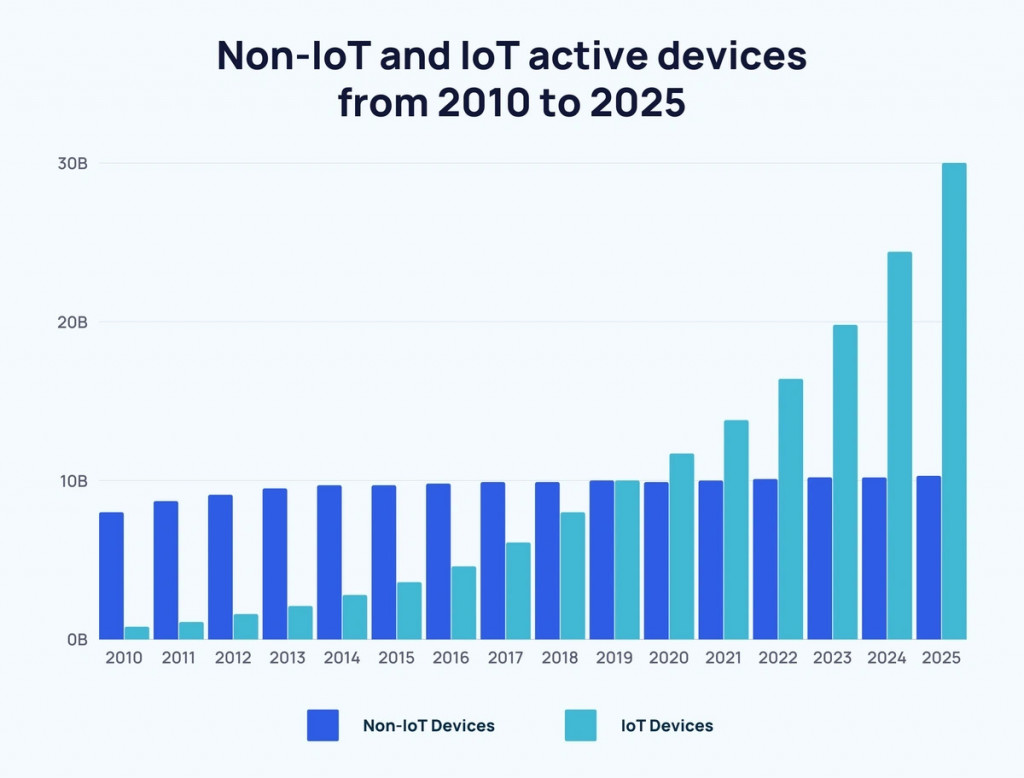
If we take a look at the biggest market players, there are Intel, Qualcomm, STM, Microsoft, PTC, Cisco, Amazon, and others. You can research their technologies, as they will be your competitors.

The industry has several segments, so you will definitely find the one that suits your business. The most popular are the industrial and automotive sectors. You can also consider the following:
- Digital twins and enterprise metaverse: these are realistic digital replicas of systems created using IoT sensor data. These digital twins allow businesses to optimize operations and gain a deeper understanding of their processes.
- Connected cars: in the automotive industry, the Internet of Things is transforming vehicles into connected cars. Companies like Airbiquity and Zubie offer features such as over-the-air software updates, crash notifications, real-time GPS tracking, and driver performance monitoring.
- Smart home appliances: LG Electronics’ ThinQ line incorporates machine learning and easy connectivity with voice assistants, while Samsung Electronics offers a range of smart appliances with seamless integration across devices. Electrolux focuses on energy-saving appliances that utilize sensor technology to minimize energy consumption.
- Industrial sector: the Industrial Internet of Things (IIoT) is being utilized to enhance factory operations, improve safety, and increase efficiency in industrial production, factories, construction, etc.
- Data analytics: with the massive amount of data generated by the devices, advancements in AI support for IoT app analytics are crucial. Artificial Intelligence plays a vital role in processing and making sense of the collected information, allowing you to create better applications and get valuable insights.
- Agricultural sector: connected sensors and devices can monitor soil moisture, weather conditions, and crop health, helping farmers make data-driven decisions and optimize resource usage.
These examples illustrate the diverse range of IoT applications and products that are boosting the industries in 2023, from digital twins and security to connected cars, smart homes, industrial operations, and beyond.
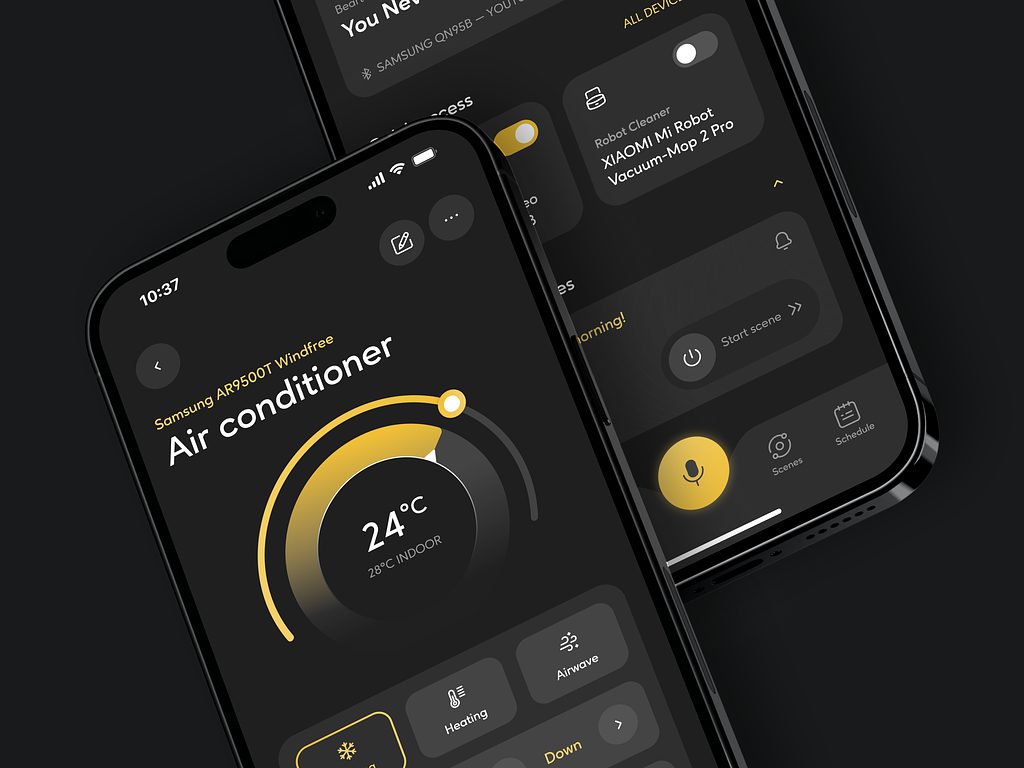
Smart Home Mobile App by Shakuro
Preparing for IoT App Development
Before starting the actual production, you need to gather essential information. First, create a business plan for your product. For a small business or newborn startup, it’s better to pick the MVP model: a minimum viable product. In your case, that will be the application that has only essential features. This approach reduces costs and development time, which is crucial in terms of the market.
Second, devote time to research your target audience and competitors. What your clients like and dislike, their pains and desires. While analyzing the rivals, pay attention to their marketing strategy, monetization type, implemented features, brand message, etc. In your IoT app design, you can take into account all the misses made by your competitors and leverage them to your benefit.
Third, we want to point out a crucial detail — monetization. There are several models and the choice will influence your success greatly. It should coincide with your company’s message as well. The most widespread is subscription type, where you offer tiered subscription plans with different features and services for users to choose from. It’s a steady income, but you can also consider pay-per-use, when the charge is based on the actual usage, or advertising, with integrated non-intrusive advertisements or secure sponsorship deals.
Essential IoT app features
The must-have options for a project of this type can vary depending on the specific use case and the type of solution you are developing. However, some common features are:
- Device connectivity: of course, your application should be able to connect and communicate with IoT devices securely, either through wired or wireless protocols such as Wi-Fi, Bluetooth, Zigbee, LoRaWAN, or cellular networks.
- Data collection: this means gathering data from connected devices in real-time or at regular intervals. It could be sensor readings, device statuses, environmental conditions, or any other relevant information.
- Data storage: after collecting, you need to have a secure place for storing the gathered data in a database or cloud infrastructure for further analysis, visualization, and historical reference.
- Data analytics: processing the collected information to derive meaningful insights, identify patterns, trends, anomalies, or predictive models is a great benefit of IoT app analytics.
- Remote monitoring and control: people should be able to monitor and control their devices remotely through the application, regardless of their physical location.
- Alerts and notifications: consider implementing real-time alerts and notifications to inform your clients of critical events or when specific thresholds are met, ensuring timely actions.
- User authentication and security in IoT: since the app is connected with sensitive data, you have to incorporate secure authentication and authorization mechanisms to safeguard the information.
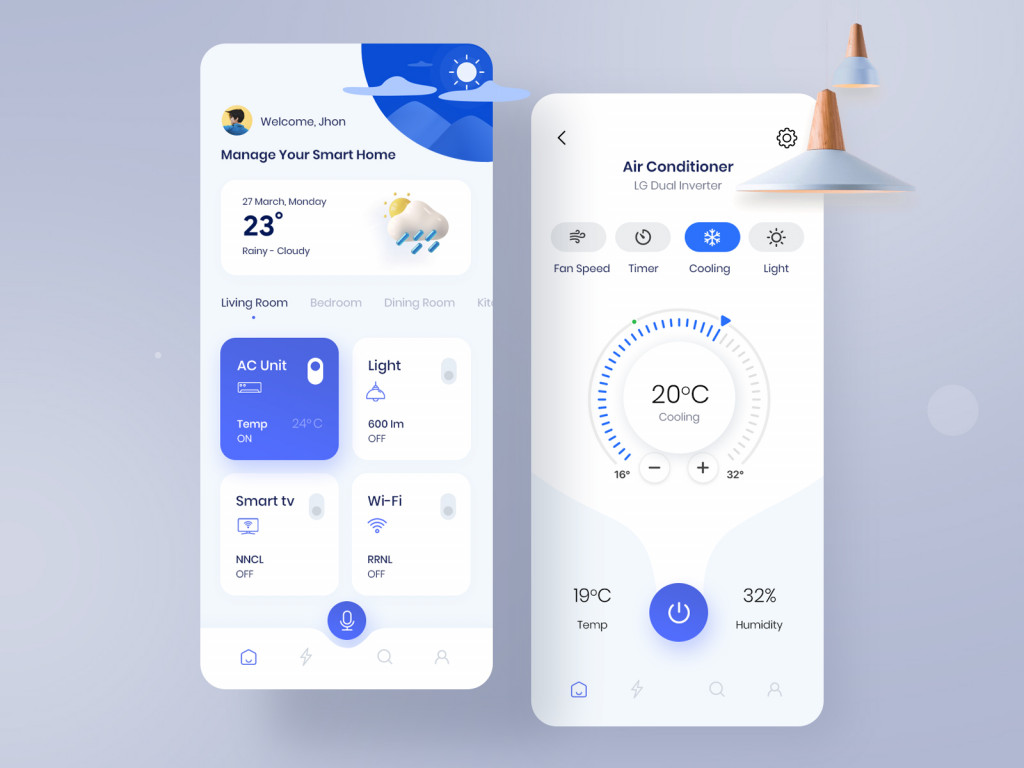
Smart Home by Jayadas
Developing an IoT app
Development costs
First things first, you need an experienced dedicated development team. However, the more qualified specialists are, the more money you will have to spend. In general, an in-house team will cost you up to $150/hour, while an outsourcing agency can cut the prices in half and ask for around $40-45 per hour for development and around $75-80 per hour for the UI/UX design. Outsourcing development is a flexible approach that without a significant loss of quality and time might reduce the cost by up to 50%.
As we mentioned above, the cost depends on the team’s experience level and location, as well as the amount of implemented features.
Simple app:
- Approximately 200+ hours ($9 000) for development
- Around 100+ hours ($8 000) for design
- Around 670+ hours ($30 150) for a custom approach
- Total: ~ $17 000 or $38 150 for custom development
Complex app with 10-15 pages:
- Approximately 310+ hours ($13 950) for development
- Around 230 hours ($18 400) for design
- Around 1 250+ hours ($56 250) for a custom approach
- Total: ~ $31 550 or $74 650 for custom development
To calculate possible expenses, you can use our Project Calculator. It allows you to check costs not just for the development, but also for UI/UX design, branding, or even the entire project.
Team
For creating an Internet of Things application, your team should include:
- Project manager
- IoT architect
- Hardware engineer
- Embedded systems developer
- Back-end developer
- Front-end developer
- Data scientist
- UI/UX designer
- Security specialist
- Quality assurance (QA) engineer
Also, if your IoT app includes a mobile component, you’ll need a mobile app developer who specializes in developing apps for iOS, Android, or other platforms.
Technology stack
- Connectivity protocols: devices need to communicate within the IoT network and with the central system. Common connectivity protocols include Wi-Fi, Bluetooth, Zigbee, LoRaWAN, Cellular (2G/3G/4G/5G), and MQTT (Message Queuing Telemetry Transport). The choice of protocol depends on factors such as range, power consumption, and data transfer requirements.
- Embedded systems programming: usually, programming is done using low-level languages such as C/C++ or embedded platforms like Arduino, Raspberry Pi, or ESP8266/ESP32.
- Cloud platform: the cloud serves as the back-end infrastructure for storing, processing, and analyzing the massive amounts of data generated by IoT. Platforms like AWS IoT Core, Google Cloud IoT Core, Microsoft Azure IoT Hub, or IBM Watson IoT are commonly used.
- Back-end services: this layer handles data processing, storage, and business logic. It involves using programming languages (like Python, Node.js, Java, etc.) and frameworks like Django, Flask, or Express.js.
- Databases: information from IoT devices is typically kept in storage for analysis and retrieval. Depending on the data structure and IoT app scalability requirements, you can use SQL databases (MySQL, PostgreSQL) or NoSQL databases (MongoDB, Cassandra).
- APIs: it facilitates communication between the application and other services, allowing data exchange and integration with external systems.
- Data visualization: you need to present the data collected from IoT devices in a user-friendly and informative way. For this purpose, use web technologies like HTML, CSS, and JavaScript.
To make your life easier, our team released a pack of ready-made UI components that you can integrate into IoT apps. For example, a glanceable temperature control:
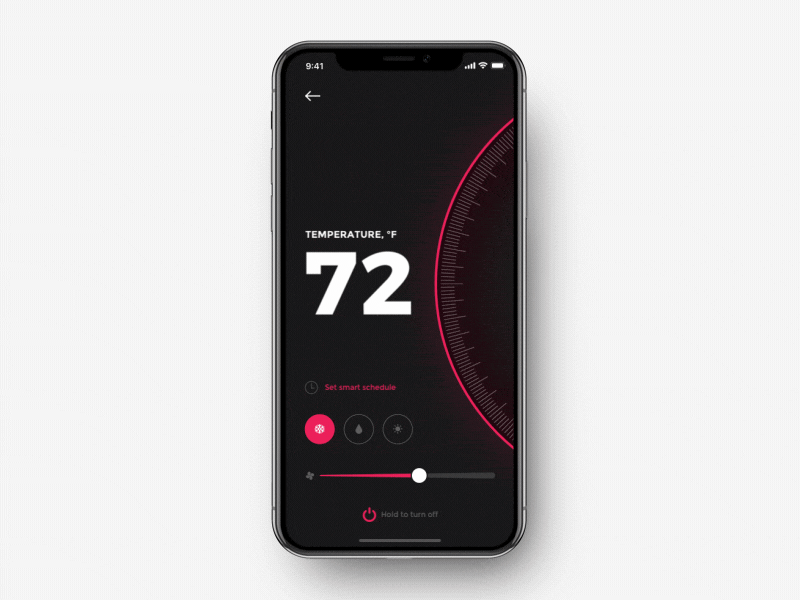
Steps for creating an Internet of Things application
Choose the right IoT app platform
There are various platforms, such as AWS, Google Cloud, and Microsoft Azure, that offer different features and capabilities. You should evaluate these platforms based on their scalability, security, device compatibility, and integration options to make an informed decision.
Consider UX design
Intuitive and user-friendly design is critical for IoT app success. You must focus on creating a seamless and enjoyable user experience by understanding user behavior, designing intuitive interfaces, and providing relevant real-time data.
Developing IoT app architecture and back-end
Building a scalable and secure architecture is essential to handle the data influx. In order to avoid clutter, you should design a robust back-end infrastructure capable of processing, storing, and analyzing vast amounts of information while ensuring data integrity and privacy.
Integrating sensors and devices
As you remember, the main advantage of IoT app development is the ability to collect valuable user data and enable real-time interactions. However, it’s easier said than done. Consider carefully providing device compatibility, communication protocols, and data synchronization for seamless device integration.
Programming and prototyping the application
To validate your ideas, create prototypes. It will help you test functionalities, and gather feedback before diving into full-scale development. For that, you need to choose the right programming languages, frameworks, and tech stacks.
Testing and deploying the IoT app
Comprehensive testing ensures the reliability, security, and performance of the application. Your team should employ various testing methodologies such as functional testing, compatibility testing, and security testing to identify and resolve issues early in the development lifecycle.
Deploying to production involves configuring cloud infrastructure, setting up servers, and ensuring seamless integration with IoT devices. Follow best practices for a smooth deployment process to minimize downtime and maximize your client’s satisfaction.
Continuous monitoring and maintenance
The release is not the final destination. You need to maintain an IoT app after bringing it to life. It involves continuous monitoring, performance optimization, and regular updates. If you monitor the performance and promptly address issues, you can ensure a seamless user experience and stay ahead of evolving industry standards.
Conclusion
Creating the Internet of Things applications opens up a world of opportunities for startups and product owners. By understanding the fundamentals of app development, you can embark on a successful journey. All you need to do is prepare meticulously, design with user experience in mind, and ensure robust testing, deployment, and maintenance. Embrace the IoT landscape, tap into its potential, and unleash innovation to thrive in the digital era.
Do you want to build an IoT application that combines the latest trends and technologies? Contact us and let’s create a versatile project that wins the users’ hearts.
